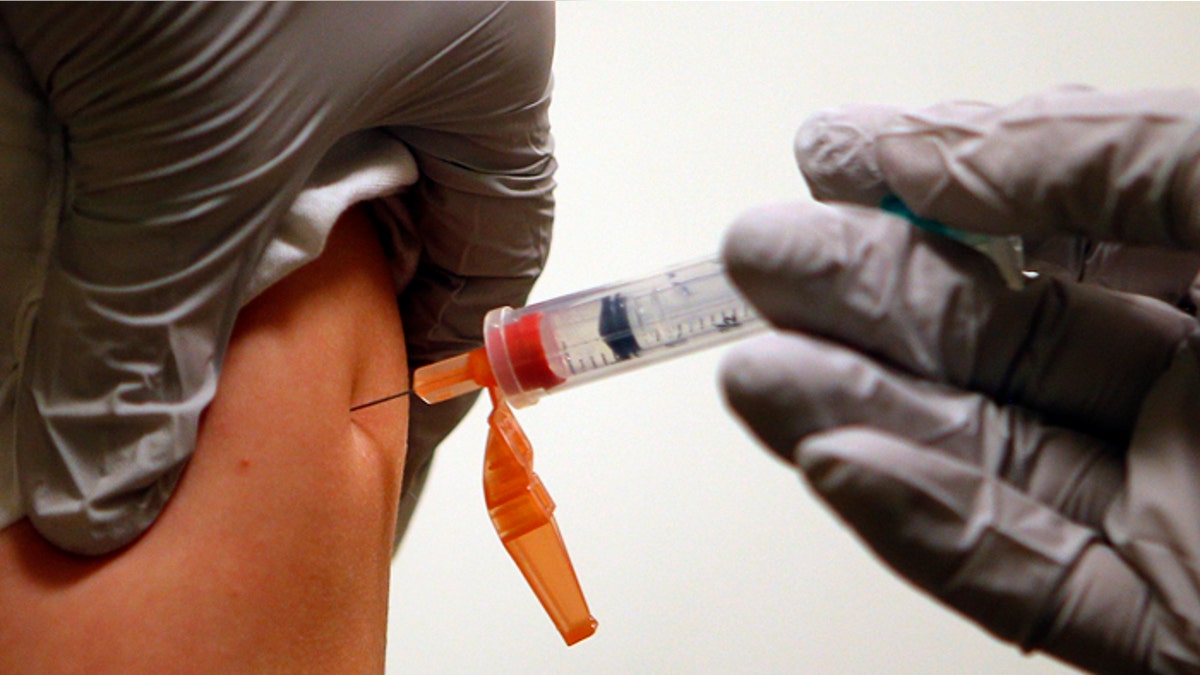
Six-year-old Diego Sanson receives an influenza vaccine injection at Massachusetts General Hospital in Boston, Massachusetts January 10, 2013. With flu cases in this city up tenfold from last year, the mayor of Boston declared a public health emergency January 9 as authorities around the United States scrambled to cope with a rising number of patients. REUTERS/Brian Snyder (UNITED STATES - Tags: HEALTH SOCIETY) - RTR3CANZ (REUTERS/Brian Snyder)
Scientists have found that the sleep disorder narcolepsy can sometimes be triggered by a scientific phenomenon known as "molecular mimicry", offering a possible explanation for its link to a GlaxoSmithKline H1N1 pandemic flu vaccine.
Results from U.S. researchers showed the debilitating disorder, characterized by sudden sleepiness and muscle weakness, can be set off by an immune response to a portion of a protein from the H1N1 virus that is very similar to a region of a protein called hypocretin, which is key to narcolepsy.
This can happen in genetically susceptible people, the researchers said, adding that around 20 percent of the European population have the genetic profile making them vulnerable.
Previous studies in countries where GSK's Pandemrix vaccine was used in the 2009/2010 flu pandemic have found its use was linked to a significant rise in cases of narcolepsy in children.
Studies in Britain, Finland, Sweden and Ireland found such a link, and GSK says at least 900 narcolepsy cases associated with the vaccine have so far been reported in Europe.
Narcolepsy is thought to be brought about by loss of function in "wakefulness" cells called hypocretin cells in one of the brain's sleep centers.
Cross-reactivity
Emmanuel Mignot, a narcolepsy researcher and director of the Stanford Center for Sleep Sciences and Medicine who has been funded by GSK to look deeper into the link, said the relationship between H1N1 infection, vaccination and narcolepsy gave his team "some very interesting insight into possible causes of the condition".
In particular, he said, it strongly suggested that the defenses, or T cells, of the immune system primed to attack H1N1 can occasionally also cross-react with hypocretin and somehow cause the destruction of brain cells that produce hypocretin.
"When we saw that the portion of the hypocretin that seemed to be recognized by the immune system in narcolepsy patients was similar to a part of the pandemic 2009 H1N1 influenza hemagglutinin molecule, we were very hopeful that we were on the right track," said Mignot's co-researcher Elizabeth Mellins, also at the Stanford University School of Medicine.
The Pandemrix vaccine mixed portions of viral proteins with a non-viral "adjuvant", or booster, designed to induce a stronger immune response. The shot was never used in the United States and has been withdrawn from use in Europe since the links to narcolepsy emerged.
The researchers said their study provided compelling evidence of "molecular mimicry" - the idea that because of a similarity between a pathogen protein and a human protein, the normal immune response to a pathogen, such as H1N1 flu, could in some people go awry, triggering the immune system to mistakenly attack healthy components of the body.
Mignot said the findings, published in the journal Science Translational Medicine, could pave the way to a new blood test to diagnose narcolepsy.
They also point towards potential new ways to try to intervene in narcolepsy before the specialized brain cells have been destroyed and led to the worst level of symptoms.
"This study will shape the next decade of research into narcolepsy," Mellins said.
Mignot, Mellins and their team now plan to study how T cell cross-reactivity to hypocretin can destroy the hypocretin cells in the brain, and whether this process could potentially be blocked to potentially prevent narcolepsy.
